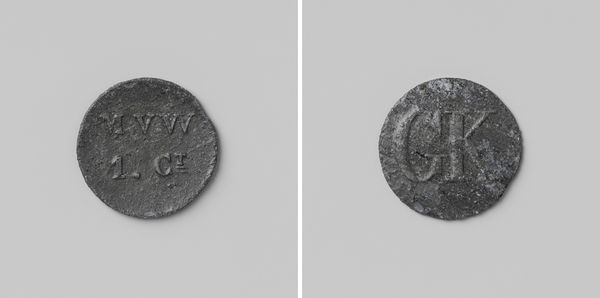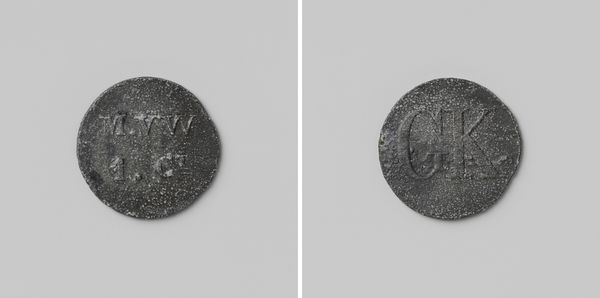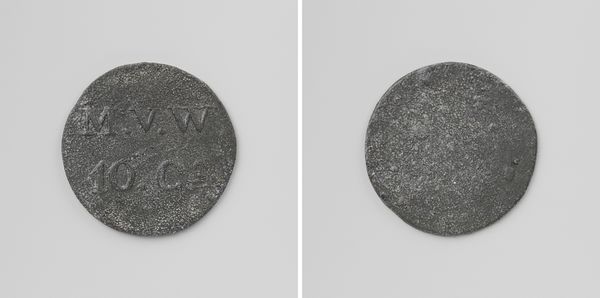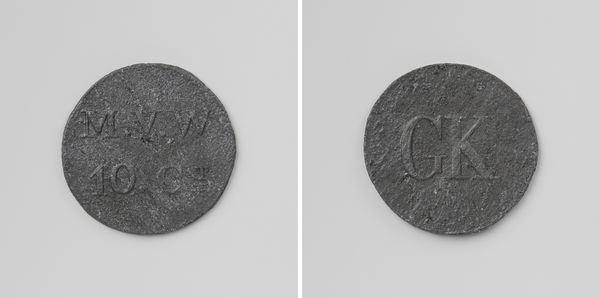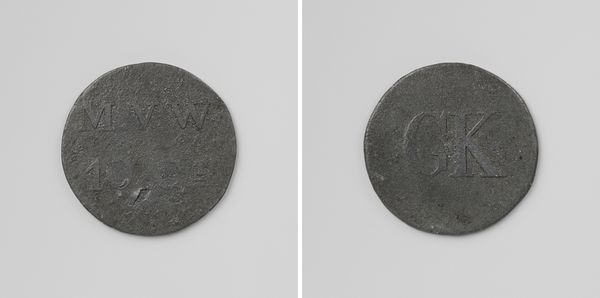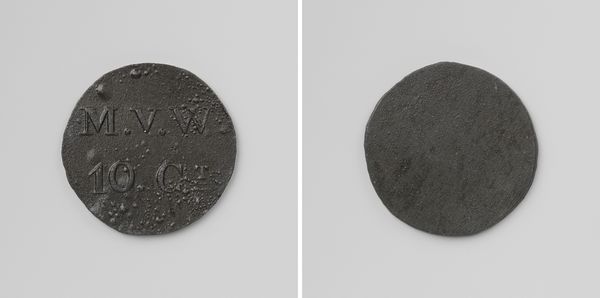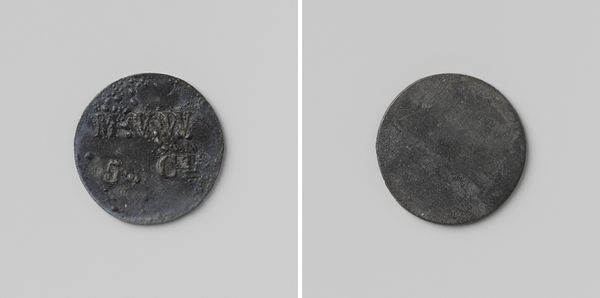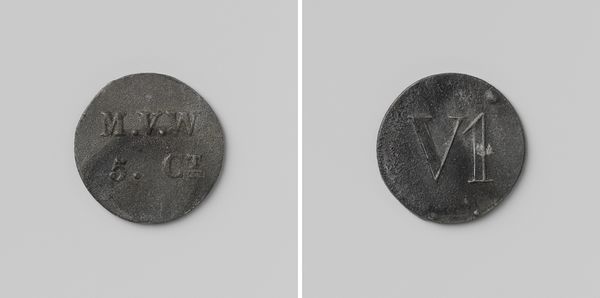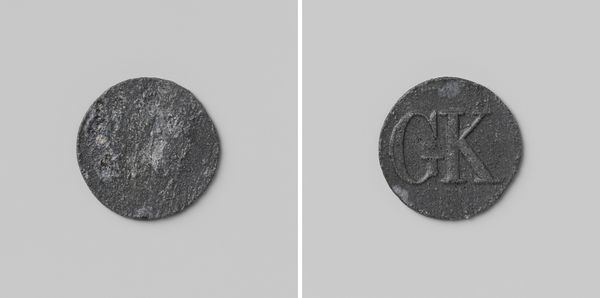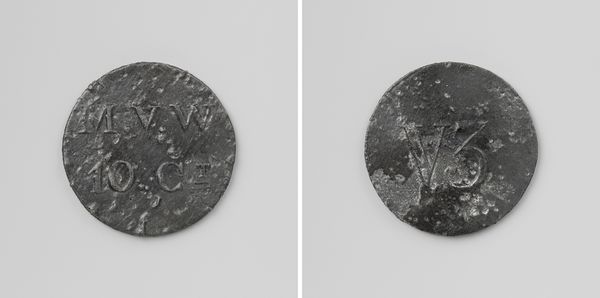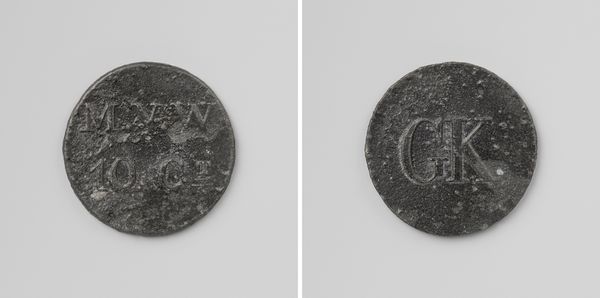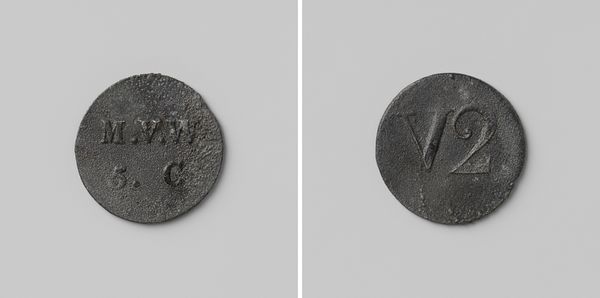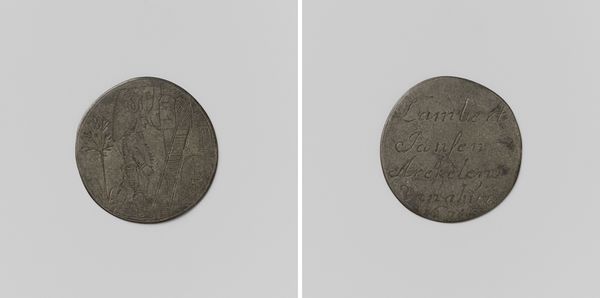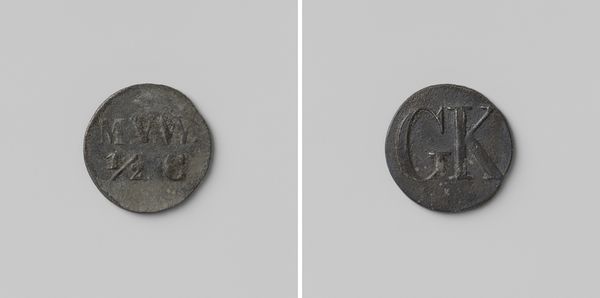
Huismunt geslagen op last van de Maatschappij van Weldadigheid ter waarde van 1 cent, ten behoeve van de Gewone Koloniën 1818 - 1859
0:00
0:00
mixed-media, print, metal, photography
#
mixed-media
# print
#
metal
#
photography
#
3d shape
#
metallic object render
Dimensions: diameter 1.9 cm, weight 1.40 gr
Copyright: Rijks Museum: Open Domain
Editor: Here we have a coin titled "Huismunt geslagen op last van de Maatschappij van Weldadigheid ter waarde van 1 cent, ten behoeve van de Gewone Koloniën", made anonymously between 1818 and 1859. The coin's surface has a compelling granular texture and matte finish. What do you see in this piece that the materiality alone may evoke? Curator: The almost brutal simplicity of its design immediately strikes me. The rough texture suggests a utilitarian object, emphasizing the inherent value placed in its very construction. The coin's form, a basic circle, directs our gaze toward the inscription and numeric value that defines it as legal tender, the very essence of its formal logic. Editor: It's interesting that you focus on the coin's inherent, rather than symbolic value. Doesn’t the inscription invite us to consider its use in this "Koloniën"? Curator: I concede that the text functions as a critical signifier. However, focusing on the raw properties, its weight and distribution, and the letterforms stamped on each side, reveals something essential about its function. One side balances, with uniform distribution, the other reveals an organized textual inscription. What is absent becomes integral to its present. Editor: I never thought about it this way. So you see value not in where it was circulated, but rather, in the pure physical properties? Curator: Precisely. By isolating the coin's composition – its mass, shape, and the way its surfaces catch light – we uncover fundamental artistic decisions. The contrast reveals that, despite its intrinsic functionality, intention is not solely utilitarian. The materiality serves intention by using only what’s visually evident. Editor: I think I’m starting to see that interplay now. Thank you! Curator: An essential question. Art emerges when pure materiality attains unique visual representation through design.
Comments
No comments
Be the first to comment and join the conversation on the ultimate creative platform.
